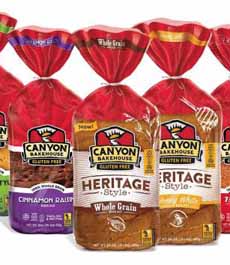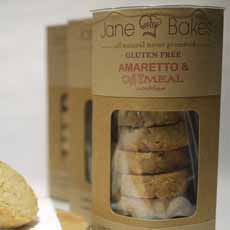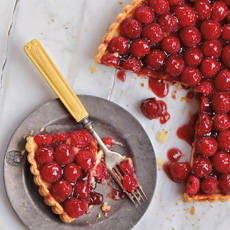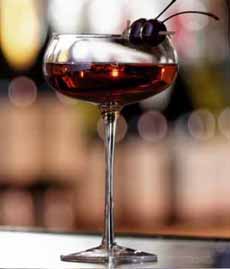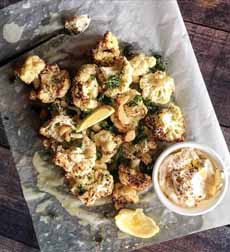3. DIVIDE the pastry dough in half and, working on a lightly floured work surface, shape each half into a flat disk. Wrap each pastry disk in plastic wrap and refrigerate the disks for at least 45 minutes and up to 24 hours or freeze them for up to 3 months.
4. FLOUR the work surface lightly. Roll out 1 pastry disk to form an approximately 11-inch circle. Ease the pastry into a 9-inch tart pan with a removable bottom. Crimp the edge decoratively, trimming away any excess dough. Refrigerate the tart crust for about 30 minutes before baking it.
5. LINE the chilled tart crust with aluminum foil or parchment paper and fill it with ceramic pie weights or dried beans. Bake the tart crust until the edges begin to brown, about 15 minutes. Remove the weights and liner and continue baking until the bottom is a light golden brown, 12 to 15 minutes. When finished, transfer the tart crust to a wire rack and reduce the oven temperature to 325°F. As the crust bakes…
6. MAKE the filling. Combine the eggs, lemon juice, lemon zest, mascarpone, cream, sugar and salt in a mixing bowl. Beat with a hand-held electric mixer at medium speed until smooth and creamy. Pour the filling into the baked tart crust.
7. BAKE the tart until the filling is set, 20 to 25 minutes. Let the tart cool completely on the wire rack.
8. ARRANGE the fruit in a tight, attractive concentric circles on the top of the tart. Place the jelly and cassis in a small saucepan, stir to combine, and heat over medium-low heat until melted and smooth.
9. BRUSH the warm jelly mixture gently over the fruit with a pastry brush. Refrigerate the tart until ready to serve.
THE YEAR’S 13 CHERRY HOLIDAYS
January 3: National Chocolate Covered Cherry Day
February: National Cherry Month
February 20: National Cherry Pie Day
March 20: National Cherry Blossom Festival
April 23: National Cherry Cheesecake Day
May 17: National Cherry Cobbler Day
May 26: National Cherry Dessert Day
June 18: National Cherry Tart Day
July, 1st Saturday: International Cherry Pit Spitting Day
July 11: National Rainier Cherry Day
July 16: National Cherry Day
August 26: National Cherry Popsicle Day
September 1: National Cherry Popover Day
THE YEAR’S TART HOLIDAYS
June 18: National Cherry Tart Day
August 11: National Bakewell Tart Day
Editor’s Note: Given the large number of cake, cookie, pastry, and pie holidays that exist, someone needs to establish more tart holidays!
THE HISTORY OF TARTS
Medieval Europe: The tart evolved in the 13th and 14th centuries from early medieval pies, which were often savory and enclosed in thick, salty crusts.
(The crusts were very purely functional and not edible, created before the wide availability of ceramic and later metal cooking vessels.)
Tarts in medieval England were often filled with meat, fish, or cheese and later, sweet versions (fruits, custards) sweetened with honey, produced locally by beekeepers*.
(Sugar was rare at the time. Imported from Southeast Asia, it was available only to the wealthy (the history of sugar).
Unlike pies, early tarts were open-faced with the filling exposed—both practical and decorative.
By the Renaissance (15th–16th centuries), tarts had become more refined, and pastry artistry developed.
Cooks used doughs enriched with butter and eggs and designed elaborate fruit arrangements to top fillings of almond cream (frangipane) and custard.
While home cooks could bake simple tarts, the pastry was a way for noble households to display wealth. They showed off tarts made with costly ingredients like sugar and exotic fruits and nuts.
France chefs elevated the tart as a distinct form different from pies. Their tartes aux fruits (fresh fruit tarts glazed with apricot jam) and tarte au citron, lemon tart filled with citrus curd, became patisserie classics.
The term tart is dervices from the French tarte, which was used for both tarts and pies.
In fact, our English word tart comes from the Old French tarte, used from medieval times to describe both tarts and pies. Written records of tarte are recorded as early as the 12th century.
It likely derived from the Medieval Latin tarta, which is related to the Late Latin word torta, which meant “a small bread.”
Tarts spread throughout Europe and beyond. As with any food, each area developed its own types based on local flavors and ingredients.
________________
*Honey was available to all classes as a general sweetener and for making mead. The fructose in fresh and dried sugars was also used by all classes as an ingredient in pastires, sauces, and stews. In grape-growing regions, grape must syrup was available, largely to the middle and upper classes. The northern regions could make birch sap syrup. Cane sugar was a rare luxury for the nobility and clergy.
Barley malt syrup was sometimes used in cooking or medicinal recipes, but not as a widespread sweetener, owing to its malty, grainy taste.
CHECK OUT WHAT’S HAPPENING ON OUR HOME PAGE, THENIBBLE.COM.
|



